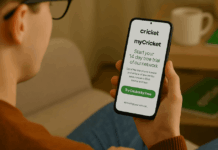In today's interconnected world, finding free WiFi hotspots is crucial for staying connected without straining your data plan. This article will guide you through various strategies to identify free WiFi hotspots in your area, ensuring you can access the internet whenever needed.
We'll introduce tools and practical tips, including effectively using the WiFi Master App. By the end of this read, you'll be well-equipped to locate reliable and free internet access points nearby.
Finding Free Internet Access Points: Benefits and Uses
Accessing free internet zones is essential for managing data costs and ensuring connectivity. When mobile data is unavailable or limited, these spots are commonly used for work, communication, or entertainment.
Identifying these access points can provide crucial internet access during travel or emergencies. The widespread availability of these zones supports digital inclusivity, enabling more people to participate in the digital economy.
Internet Access Points
Internet access points, known as WiFi hotspots, are crucial in today’s digital landscape. They allow users to connect to the internet wirelessly, enhancing mobility and accessibility.
Understanding Internet Access Points
Internet access points, or WiFi hotspots, are physical locations where individuals can connect to the Internet using WiFi technology. These points can be either public or private and offer internet access without the use of cellular data.
They are particularly useful in areas where cellular coverage is poor or for individuals with limited data plans. Typically, these access points provide internet access through a router connected to an internet service provider.
Types of Internet Access Points: An Overview
There are several types of internet access points, each serving different public needs:
- Public areas: These are locations like parks, squares, and streets where cities provide free internet to help people stay connected.
- Businesses: Many cafes, restaurants, and shopping centers offer free internet to attract and retain customers.
- Municipal networks: Some cities deploy networks to provide residents and visitors free or low-cost internet access across large areas.
Finding Internet Access Points
Locating internet access points requires knowing where to look and which tools can help. This section explores various methods to find these essential services.
Methods to Discover Internet Access Points
Multiple tools and strategies can assist in finding internet access points. Mobile apps and websites are specifically designed to map these locations and are updated regularly to ensure accuracy.
Community feedback within these platforms also helps users verify the quality and speed of connections. These tools allow individuals to find internet access points that meet their needs easily.
Using the WiFi Master App
The WiFi Master App simplifies the search for nearby internet access points. By enabling location services, the app displays a map of available hotspots.
Users can view details about each hotspot, including security protocols and connection strength. The app also allows users to contribute to the community by adding new locations and providing updates on existing ones.
Websites Listing Internet Locations
Websites that catalog internet locations provide comprehensive lists of available hotspots. These platforms often include filters to search for specific types of places, such as cafes or libraries.
Regular updates and user reviews help ensure the reliability of the information provided. Such websites are invaluable resources for planning trips or finding spots to work remotely.
Using Maps and Location Services: Key Strategies
Mapping tools and location services are essential for efficiently locating internet access points:
- Utilize GPS technology: Leverage your device’s GPS to find the closest hotspots in real time.
- Bookmark favorite spots: Save frequently visited locations on your map for quick access in the future.
- Check for updates: Regularly update your location services to include new and recently added hotspots.
- Read user reviews: Use community feedback to choose reliable and fast internet locations.
WiFi Master App
The WiFi Master App is designed to locate internet access points effortlessly. It helps users find reliable and fast connections for free.
Features of WiFi Master App
The WiFi Master App offers comprehensive features to enhance your internet connectivity experience. It provides a real-time map of nearby free internet spots, complete with details on connection quality and user ratings.
The app also allows users to contribute by adding new locations and updating existing ones. Security features help ensure that your connection remains safe while using the app.
Downloading and Installing the App
Before you can start locating internet access points, you need to install the WiFi Master App:
- Visit the Google Play and search for "WiFi Master App."
- Select the app from the search results and click "Install."
- Once installed, open the app and grant it the necessary permissions to access your location.
- Register for an account or log in to access all features if you already have one.
Using this App
To effectively use the app, follow these steps:
- Open the app and enable your device’s location services to allow the app to detect your current location.
- View the interactive map that shows all available hotspots in your vicinity.
- You can filter hotspots based on preferences such as signal strength or type of location (e.g., cafes, libraries).
- Connect to a chosen hotspot by following the app’s directions or using the provided connection details.
Safety Tips When Using Public Networks
It's important to be aware of security risks when using public networks. These tips ensure your data remains protected in potentially vulnerable environments.
Risks of Public Networks
Public networks can expose your device to various security threats, such as data breaches or malware infections. These networks often lack strong encryption, making it easier for unauthorized users to intercept your data. Regular use without protective measures can lead to significant privacy and security issues. Always approach public internet access with caution.
Securing Your Data on Public Networks
To safeguard your information on public networks, it's crucial to follow the best practices:
- Utilize Virtual Private Networks (VPNs) to encrypt your internet traffic. This makes it more difficult for cybercriminals to access your data.
- Select a VPN provider with a strong reputation for security and privacy. Ensure the VPN is active before you connect to any public network.
- Keep your VPN app updated to benefit from the latest security enhancements.
- Disconnect from the VPN once you use the network to preserve your device’s battery life.
Verifying Network Authenticity
Ensuring the authenticity of the network you connect to is vital:
- Always verify the network's official name with the staff or the legitimate source before connecting.
- Avoid networks with generic or suspicious names that could indicate a setup by cybercriminals looking to capture data.
- Look for networks that require passwords, as these typically offer a degree of protection against unauthorized access.
- Regularly update your device’s security settings to ward off potential threats effectively.
The Final Word on Discovering Free Internet Zones
In today's connected world, the ability to discover free WiFi anywhere enhances both productivity and accessibility. Utilizing tools like the WiFi Master App ensures you can always find internet access points, whether you're in urban centers or quieter neighborhoods.
Remember, safety should never be compromised, so always use secure practices when connecting to public networks. By following the tips in this guide, you'll be well-equipped to stay connected safely and effortlessly wherever you go.









